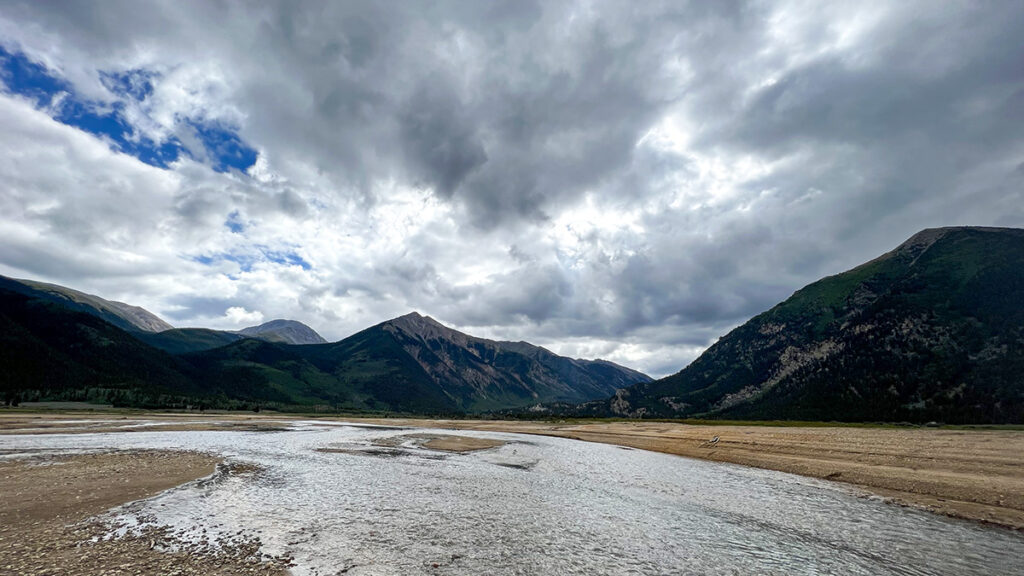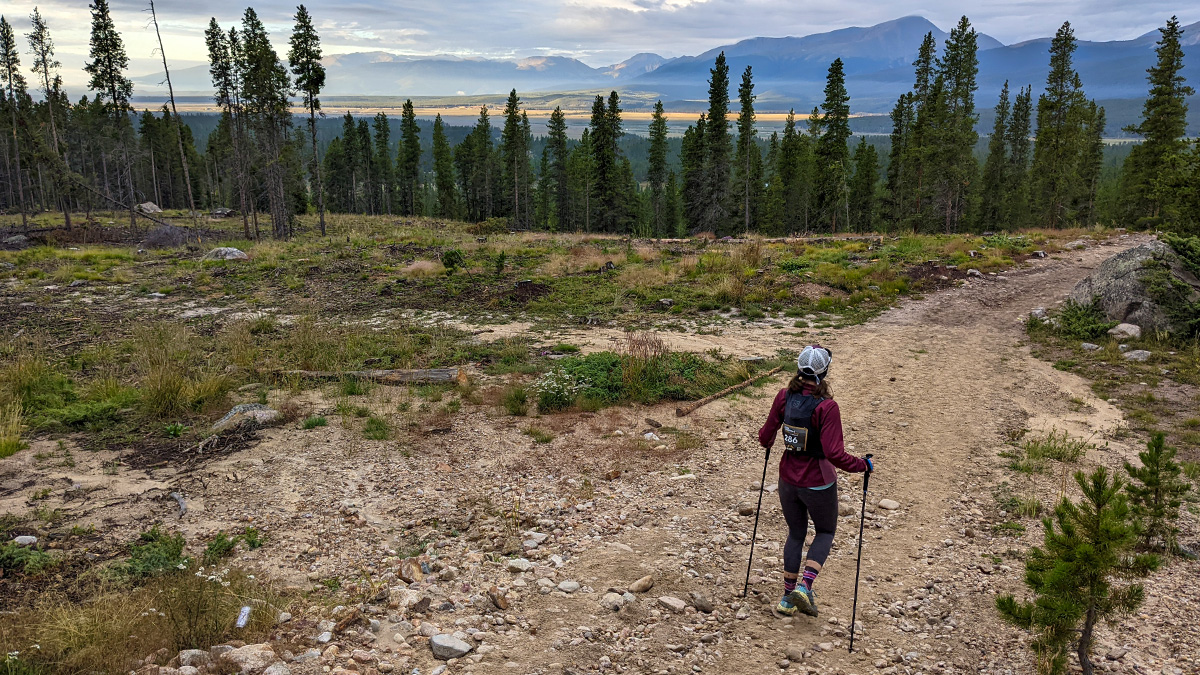Editor’s Note: This post is longer than typical so that we can include background and reflection of the athlete, Kristin Gablehouse, on her journey from training to finishing the Leadville Trail 100.
Kristin reached out to me in early Feb. of 2022, and we discussed racing, training, and 100-miler methodology. Kristin shared that she was just happy to be here after a traumatic brain Injury (TBI) that has given her more than a few scares over the years. But being scared hasn’t set her back.
My mother had a stroke in 2001 that almost took her from me. I’ve experienced the pain, frustration and the “mountain to climb” as someone returns from the fog of a brain injury. From the first call with Kristin, I knew this wouldn’t be an average buildup for Leadville. It would require me to ask tough questions, challenge myself to think through Kristin’s needs and work around a few minor limitations.
Early on, we agreed that Leadville is a “runners’ race,” and although it’s at 10,000 feet, the majority of the race is very runnable. How I coach this race has changed a lot over the years. I’ve found that the middle of this race gets all of the attention. While Hope Pass does consume roughly 50% of the total climbing, it only consumes 20% of the race mileage. There’s 80% of the race yet to consider.
Leadville is a running race that demands managing that 20% of the race to do the least damage. I see athletes overprepare for this section and forget that they will have almost 40% of the course and the darkness of the night to get through. What deserves your focus is what will make improvements on race day.
Running economy and endurance were going to be our priorities. We certainly wouldn’t skimp on hill work, but given Kristin’s last three 100 milers, she had good climbing legs for us to leverage.
Getting off the ground
Kristin started with me in March 2022 and was a little bruised and beaten up after a tough day in the heat at Black Canyon 100K. One of the big impacts we had to work on right away was planning around her delayed fatigue response from that race. She had an average recovery for three days and then some rough bouts of insomnia for about four days afterward, impacting recovery and our return to training.
We simply gave more room for days off in the week following a longer event. We eased into her first long race with me at 35-45 miles per week (mpw) which had Kristin feeling a little uneasy as she’d been accustomed to more mileage going into a similar length race. As it was my first few weeks of understanding how she adapted to training — I was focused on having her fully recovered and nailing workouts. I knew that Black Canyon was tough on her mentally, and missing workouts or grinding out long runs wasn’t going to build confidence.
Kristin raced the Desert Rats 50K on April 16th, and this was her first event to truly race. Though, she was a little gun-shy after that hot day at Black Canyon. We dialed in her nutrition and hydration plan and had a big goal of controlling the effort. She had a great day out on the course and transferred a good bit of her 100K fitness to the 50K, where she was able to really enjoy the final miles downhill.
The following fundamental training block focused on the North fork 50 Mile on June fourth. This would be our only major buildup race leading into Leadville 100. I figured a 100K, 50K and a 50M was enough to show us any gaps or cracks in her fitness. This was a big test for Kristin for two reasons. One, she had never done such little mileage in a buildup for a 50 Miler; two, we trained through this event and used it to end a good week of training. Not including the race week itself, Kristin peaked with two weeks of 62 and 56 miles, respectively. Race week was a total of 63 miles, including the 50-mile race.
I knew Kristin could run forever, but she fatigued quickly with speed work. Understanding this meant instead of extensive climbs, shorter 2:00-3:00 intervals were going to move the needle and give us room to build to longer intervals later in the spring and summer. We’ll dive into that here in a moment.
The Build Into Leadville 100
Kristin has run three previous 100-mile races and completed all of them. The buildups for those previous seasons show that there wasn’t a lot of contrast or continuous progression. I monitored her zones frequently, and we’d adjust accordingly when we hit a new threshold. I can’t really comment in-depth about the three previous cycles as I can’t ensure that her pace zones were set frequently.
When we left off, Kristin was heading into North Fork 50M, where she would go on to finish third female overall, which was a breakthrough performance for her. She had legs at the end and could still accelerate, run and push herself in the final miles. She has struggled in the past with downhill running due to her brain having to process terrain slower than pre-brain injury. On our follow-up call, she felt set free in these final miles. This was a breakthrough in more ways than one. For many of us, music is a huge part of pushing through the later miles or dark spots. This was the first race where Kristin could listen to music and process the trail in front of her since her TBI. That’s a huge deal.
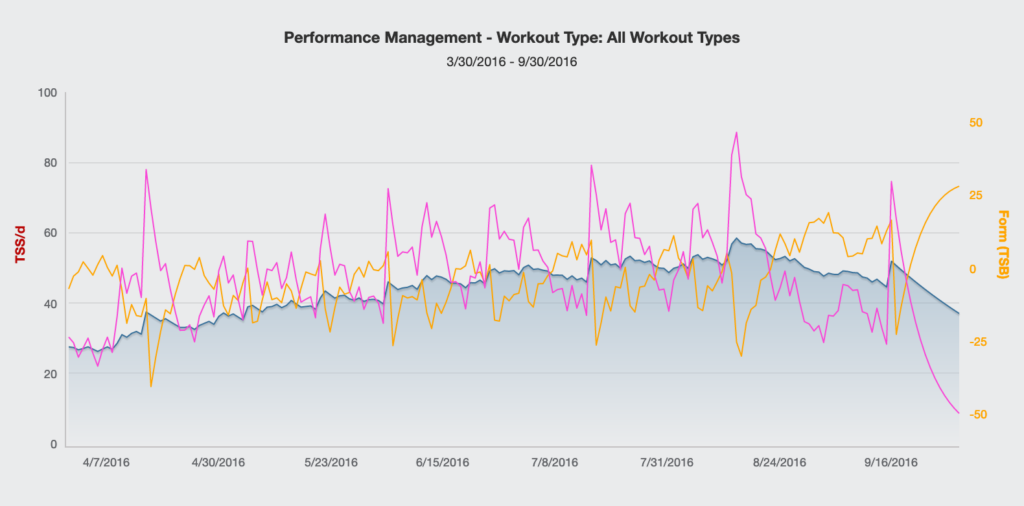
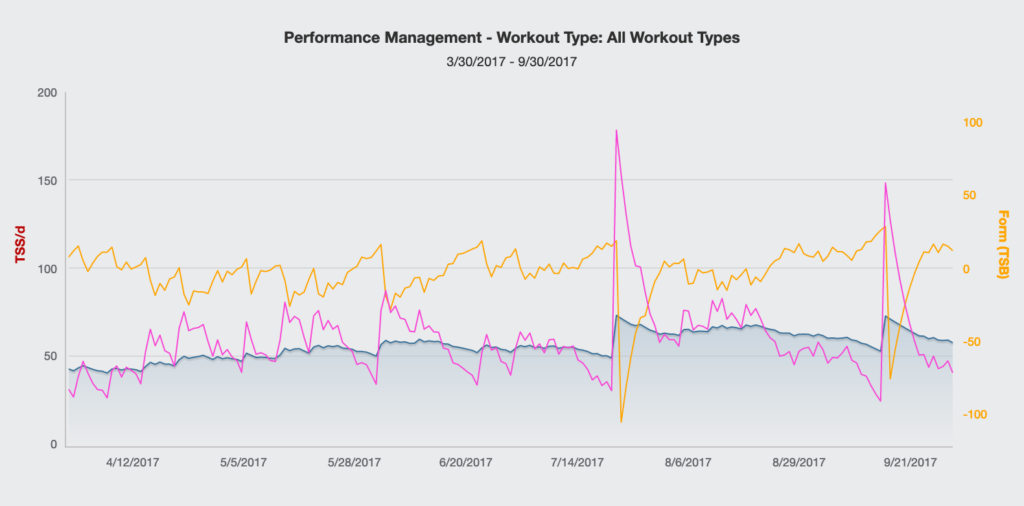
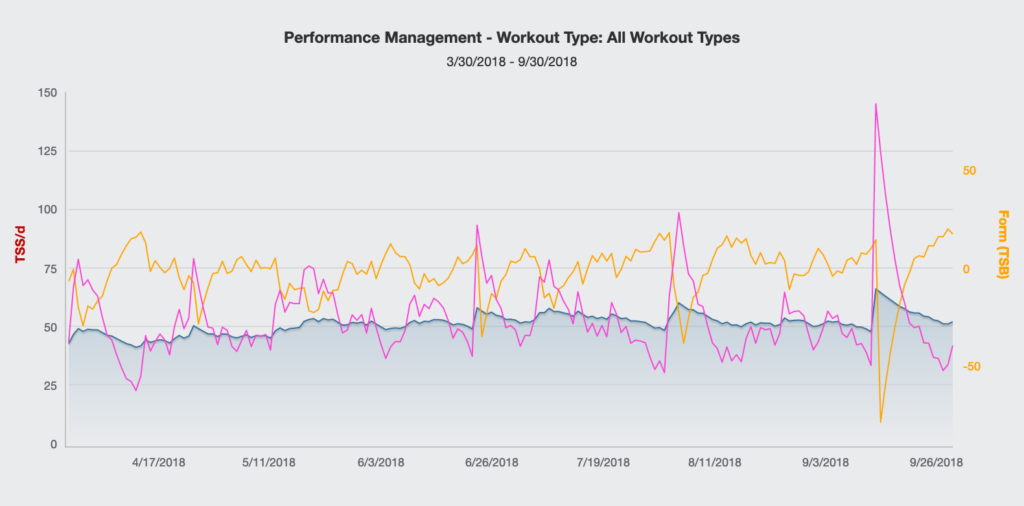
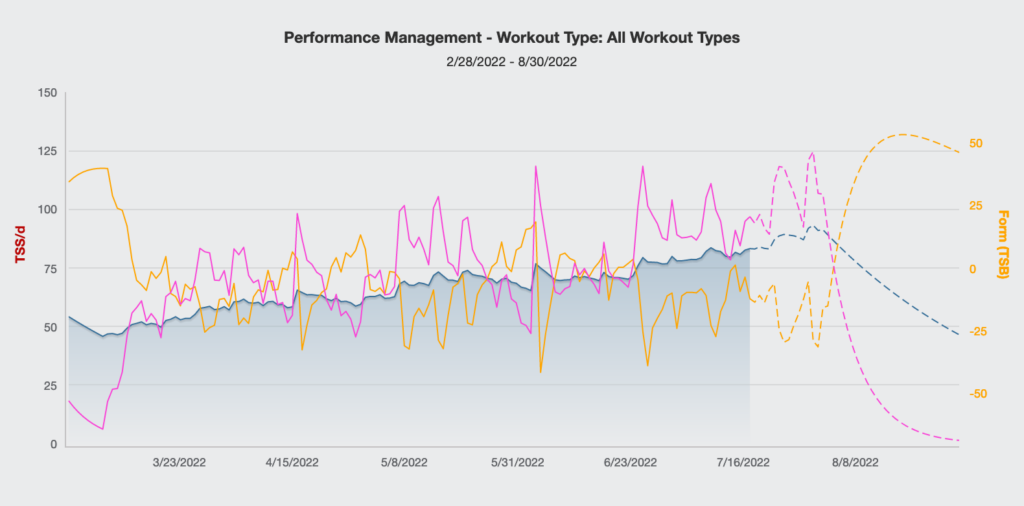
Speed Work
Her North Fork results encouraged me to keep building out longer and longer intervals, 4:00 and 5:00, working up to 3x 10:00 in her final weeks into Leadville. One of my mentors, Brad, always mentioned balancing the energy systems and consistently hitting hills, tempo, true speed and endurance every two weeks. This work has transferred from my road marathon coaching into my work with ultrarunners. We hit short 40-second intervals, short hills and tempo runs in her buildup, keeping training entertaining and engaging. While it wasn’t baby steps every week, it allowed Kristin to take pressure off her legs and not constantly do hills while still building a massive engine.
Periodization & Progression
When possible, I followed a 3:1 periodization and only diverted when we built up for the Leadville Training Camp and some travel for conferences — which required us to get creative with her training. My goal was to progress her training load by 2 CTL points each week whenever possible and lean heavily on actual down weeks. I often programmed 45-mile weeks after 65- and 75-mile weeks so she would truly adapt to the training. Knowing that recovery was more complicated for her than most athletes, it only made sense to default to more recovery in her training than always push for more stress. This often meant stacking two weeks of training and then bringing the load down significantly so she could absorb the training. Worst case scenario, she went into her next build week feeling good, a big mental win! Stacking wins was essential to our buildup, and the buildup to Leadville is long. You need to see wins along the way!
Peak Mileage & Mentality
Mileage is essential, but any trail runner will tell you that “time on feet” is more important. This is where Kristin and I would work closely together and rely on her knowledge of self. I trusted in the data and would only let her get over a -30 TSB on occasion. She knows how to push herself really hard, and at times I would have to be the bad guy or simply find a compromise when it came to choosing a route or giving in to her request for “extra work.” In working with Kristin, I always leveraged recovery. When we’d have an occasional bad night of sleep before a workout or a long run went sideways — we skipped the hard stuff and went out for time. It can be hard to do that, so kudos to Kristin for trusting me and allowing herself to recover. In her final buildup for Leadville, she hit 81 and 78 miles, respectively. Not crazy high and not exceptionally low. We tried to squeeze the lemon for all it was worth, ending most build weeks between -24 and -32 TSB, which was enough load for her to fully recover from by the time Tuesday workouts came along. That’s the thing with training at a higher level, you might be able to do more, but the only work worth doing is the work that you can recover from by your next workout. More is not always better in 100-mile training — know when enough is enough!
Weekly Build: Strength, Cross Training, and Training Days
Kristin frequently trains seven days per week, and on rest weeks, we go for a full day off, running six days. During those seven days, she would complete two high aerobic or anaerobic workouts on Tuesdays and Fridays, with the days between doing 45-60 minutes of aerobic work. Peak weeks would have a rare double morning and evening. I included doubles to build the necessary fatigue inside a week without leaning 100% on her weekend runs to spend the bulk of the time on her feet. She often completed back-to-back long runs, with her longest days being six hours and two and one-half hours. To keep her mobile and strong, we followed a simple strength training routine utilizing a rotation of three different workouts throughout the build. While the repetition of these strength routines could be seen as mundane, it has proven effective in my athletes year after year.
Post-Race Reflections
Leading into the race, I caught Kristin just after she finished speaking on a women’s panel at the expo. One of the things she noted was just how hard it was for her at the pre-race meeting, and just kind of noticed that some of her TBI stuff was kind of getting to her. The loudspeakers, general commotion and things like that had set her off a little bit. She made the right move to get out of there as soon as possible.
Leading into the race, some small things just weren’t quite right. But wow, she was able to bounce back from some minor setbacks and put herself in a better position. Her race started great, leading into the Twin Lakes aid station and toward Winfield.
She came through super strong, but as she headed up Hope Pass, we had a storm cell move in. The weather has been notoriously tricky for her to manage during this training cycle. She was able to do the best she could and into the Winfield aid station. At the time, she was in 360th place out of 520 racers still in the race.
Kristin was really able to rally once she got back into Twin Lakes, and she passed 30 or more people by the time she got to the 100K mark, and then from there, she’d go on to pass 140 more people over the next 37 miles. That’s roughly four people per mile.
That’s a pretty impressive number considering it’s through the night and yet another rainstorm before heading to the finish. She had a great race, finishing at 28:22:22. There was definitely more in there for her to finish sooner, but she shared with me that it was a great race because she could run the whole time.
As we initially discussed, most of this course — 80 miles or 80% — is very runnable, and then there’s a little bit of a bump. It’s about a 20-mile section that does go up over and back on Hope Pass, but you have to be able to run on those tired legs. You have to be able to still turn it over and have a good economy.
We can’t control the weather. And we can’t control a lot of the other environmental factors, but we were able to put her training in a place where she could still run at the very end of the race. That shows with her ability to move up 170 places in that last 40%.
Congrats to Kristin on an amazing race. It’s absolutely a great time at just over 28 hours, and I think if she came back to this race, she could knock off hours with some small changes in strategy and, hopefully, better weather.
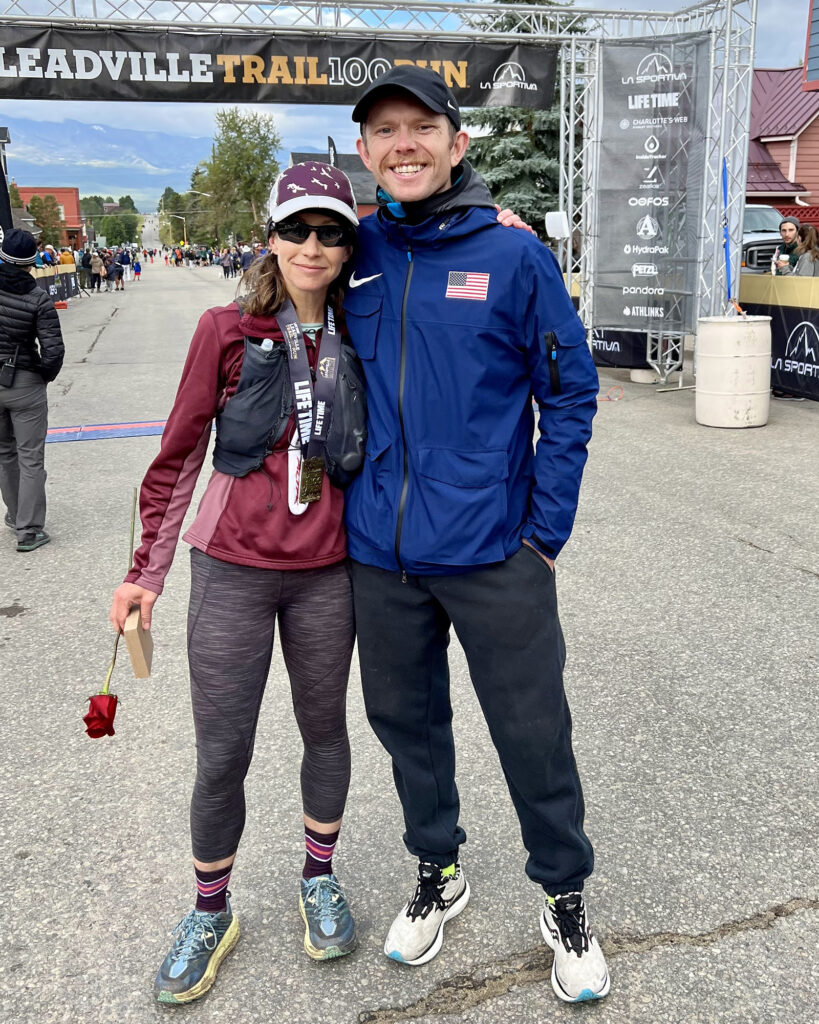
The Runner’s Perspective — by Kristin Gablehouse
Background
I trained for my first 100 miler while recovering from a mild traumatic brain injury, and running was a huge part of my recovery process. That was seven years ago. I still am not fully recovered from that, but running continues to help me make huge strides towards that recovery.
People always ask, “Why 100? Why would you run that far?” And for me, I started training for my first 100 miler while I was recovering from [the] TBI, and when I signed up for that first hundred miler, I could only run-walk five miles. And it was a big gamble just to sign up. I didn’t know if it was possible, but I did it.
I finished two more after that race and swore I’d never do it again. And yet here we go again. Because ultimately, it’s proving something to myself. It proves I can do something hard and push myself in ways I never have before.
Leadville Trail 100 is a much more runnable course than those other races. In the past, I’ve just survived the course trying to get through it and make the cut-offs. For this race, I’ve been working hard to see what I can do if I really push. I’ve tended to run comfortably, and I want to get out of that comfort zone and see what I’m capable of doing at this point in my recovery.
Training
Training for Leadville has been a very different experience than my previous hundreds. Before, it was a lot of time on my feet. Long hikes through the backcountry, lots of snacks with friends — they were long social runs. Training for Leadville has been more structured workouts, actually running my long runs. It’s been way more running mileage than I’ve ever had before, although the total mileage has been about the same.
Andrew changed my approach, which was tough for two reasons. The first was that long, flat, boring runs are…boring, and a lot of actual running. The second is that it was a hard mental shift to trust that the long flat miles and strength work were really going to prepare me for Leadville.
I had about 12 weeks with a TSS over 500, and in the build-up to my last hundreds, the most I ever had over 500 was six. It’s been much higher intensity work this time. In the build-up for the Leadville race, I worked a lot on nutrition and changing the way I fuel pretty drastically. In the past, I focused more on calories — total calories — and I was aiming for somewhere between 150-200 calories per hour.
In those previous training blocks, I wasn’t focused much on the source of those calories. I have been much more focused on carbohydrate intake, aiming for over 60 grams of carbs per hour. That really freaked me out at first. I didn’t think I could actually stomach that, and I thought it would cause a lot of problems, but I eased into it, and it was totally fine. It’s made a huge difference, especially on those long runs and my last 50 miler in the build-up to this race.
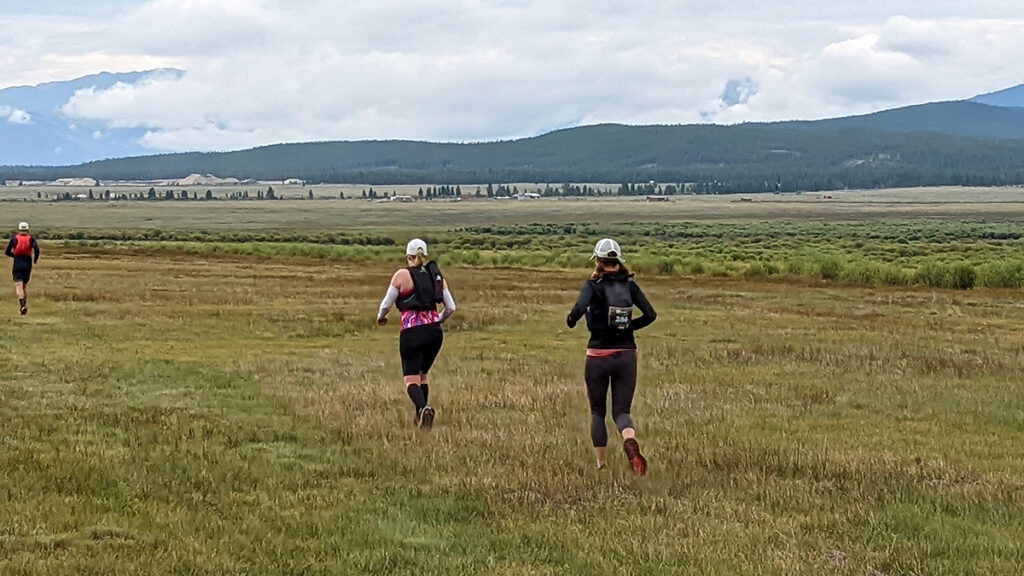
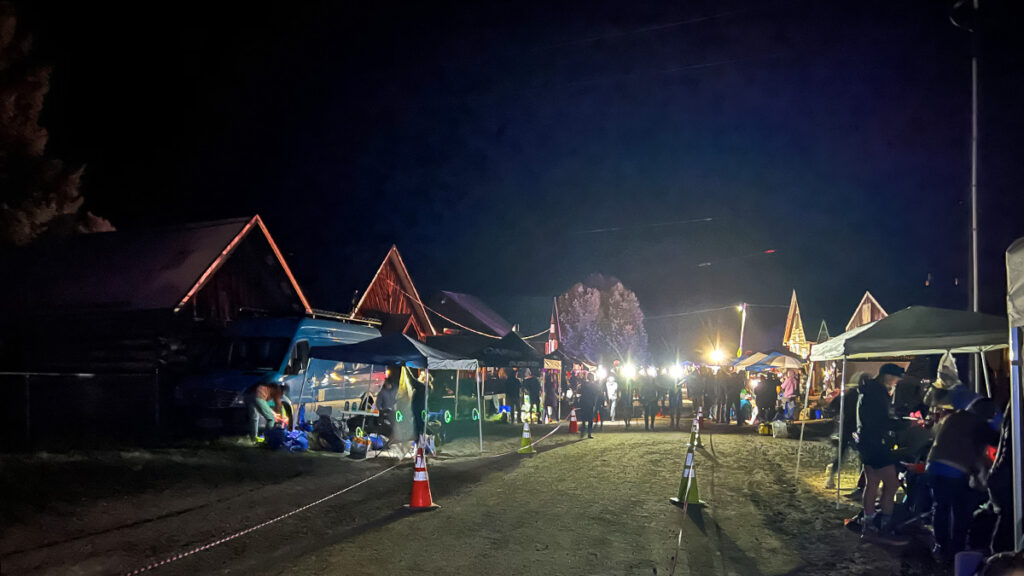
The Race
When I set up my pace chart for Leadville, I knew I wanted a very conservative start. I’ve heard of too many people walking the most runnable course sections in the second half, and I wanted to avoid that. I reviewed my paces during training runs on the course and the planned versus actual paces for a similarly paced friend who raced last year. I built in extra time for aid stations. Thinking I would want a few additional minutes for clothing changes or food — at Twin Lakes inbound and out, and Winfield.
Going into the race, I did have some reservations about the climbs on Hope Pass, not having done much climbing or hiking compared to previous training builds. But as Andrew says, Hope Pass is only 20% of the course.
The morning started with a hiccup due to a low battery on my waist light. Luckily there were more than 600 people with headlamps at the start of the race, so I turned it off and didn’t even turn it back on until we hit the singletrack seven miles into the race. I did have a spare battery in my pack, but I didn’t want to stop to get it out. I could run the light on low power, and the low light forced me to keep my pace slow until daylight. I got into May Queen aid station 2:30 into the race, which was right where I wanted to be. If I’d had a fully charged battery and fresh legs, I probably would have run that section much faster than planned and paid for it later.
At my previous three 100s, my pinky toes turned into giant blisters and became a very limiting factor. After those issues, I started wearing toe caps on my pinky toes this year during my long runs and races. They were perfect during the North Fork 50 miler, but 16 miles into Leadville, they wouldn’t stay in place despite adjusting them several times. I told myself it was worth stopping to get them back in place if it saved me from giant blisters slowing me down later in the race. I stopped between May Queen and Outward Bound four times and got in 15 minutes later than planned.
Outward Bound to Twin Lakes went pretty well. Somewhere near Pipeline, I finally gave up on the toe caps and hoped for the best. I cruised very comfortably through this flatter, runnable section and arrived at Twin at 12:30 p.m., making up 15 minutes and now back on my pace chart.
Up until Twin Lakes, my nutrition and hydration had been great. I had aimed for 60g carbs per hour, primarily relying on Spring Energy and mashed potatoes, with a few other random snacks to change things up. After Twin, the wheels started coming off the bus.
Storms were moving in, and I have been very sensitive to barometric pressure changes ever since my brain injury. I became extremely fatigued, dizzy and nauseous as the rain fell. I couldn’t eat enough during this section, and the climb up Hope Pass was 37 minutes slower than planned. I felt awful and honestly hoped I would miss the time cut at Winfield so I didn’t have to go back over a second time.
As I started the descent, the storm passed. The trail was wet, slick and crowded, but the descent only took four minutes longer than planned. I took a little extra time at Winfield for foot care and put on a dry shirt. I pushed to 45g carbs every 30 minutes on the climb back up. Descending back to Twin, the trail was still wet and slick. I slid several times, which made me slow down a bit more. I hit the valley floor an hour and a half later than planned, but my legs felt solid, cruising into Twin to pick up my pacer.
After changing into dry clothes and taking time for foot care, we headed out. The climb north out of Twin felt easier than expected, and then we hit the long gradual descent through Half Pipe to Outward Bound. This was where all those flat, boring training miles turned into gold. I still had running legs. I ran the 5.8 miles from Half Pipe to Outward Bound in one hour flat. I felt like I was flying as my pacer, and I passed everyone walking this section.
Post-Race
In my previous three 100s, the last 30 miles were slow hiking suffer fests, with exhausted legs and horrible blisters. Although the general fatigue was hitting me, and I had a hard time when the terrain was rocky, where it was smooth, I could still run (with some walking breaks) all the way to the finish.
After the rough patch on Hope Pass, I was thrilled to turn things around, and it was incredibly fun to finish a race feeling this strong, with no blisters. I finished at 28:22, 1:22, behind my goal time. I hit my splits for the last 40 miles and even made up nine minutes. While I was definitely tired at the finish, I didn’t feel as wrecked as I had after the previous 100s.
It was a good feeling, and I’m thankful for all those flat training miles.
